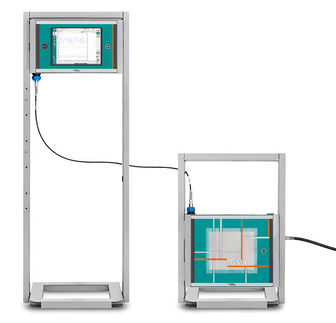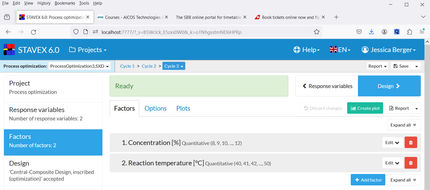| Labyrinth (inner ear)
|
|
|
| Latin
| labyrinthus vestibularis
|
| Gray's
| subject #232 1047
|
| Artery
| labyrinthine artery
|
| MeSH
| Labyrinth
|
| Dorlands/Elsevier
| l_01/12474346
|
- For more uses of the word labyrinth, see Labyrinth (disambiguation)
The labyrinth is a system of fluid passages in the inner ear, including both the cochlea which is part of the auditory system, and the vestibular system which provides the sense of balance. It is named by analogy with the mythical maze that imprisoned the Minotaur, because of its appearance.
The vestibule is the region of the inner ear where the semicircular canals converge, close to the cochlea (the hearing organ). The vestibular system works with the visual system to keep objects in focus when the head is moving. Joint and muscle receptors also are important in maintaining balance. The brain receives, interprets, and processes the information from these systems that control our balance.
Pathology
Interference with or infection of the labyrinth can result in a syndrome of ailments called Labyrinthitis. The symptoms of Labyrinthitis include temporary nausea, disorientation, vertigo, and dizziness. Labyrinthitis can be caused by viral infections, bacterial infections, physical blockage of the inner ear, or due to decompression sickness.
Anatomical details
Top image is antero-lateral and bottom image is postero-medial.
- Lateral semicircular canal; 1’, its ampulla;
- Posterior canal; 2’, its ampulla.
- Superior canal; 3’, its ampulla.
- Conjoined limb of superior and posterior canals (sinus utriculi superior).
- Utricle. 5’. Recessus utriculi. 5”. Sinus utriculi posterior.
- Ductus endolymphaticus.
- Canalis utriculosaccularis.
- Nerve to ampulla of superior canal.
- Nerve to ampulla of lateral canal.
- Nerve to recessus utriculi (in top image, the three branches appear conjoined). 10’. Ending of nerve in recessus utriculi.
- Facial nerve.
- Lagena cochleæ.
- Nerve of cochlea within spiral lamina.
- Basilar membrane.
- Nerve fibers to macula of saccule.
- Nerve to ampulla of posterior canal.
- Saccule.
- Secondary membrane of tympanum.
- Canalis reuniens.
- Vestibular end of ductus cochlearis.
- Section of the facial and acoustic nerves within internal acoustic meatus (the separation between them is not apparent in the section).
See also
| Sensory system: Auditory and Vestibular systems |
|---|
| Outer ear | Pinna (Helix, Antihelix, Tragus, Antitragus, Earlobe) • Ear canal |
|---|
| Middle ear | Eardrum (Umbo) • Ossicles (Malleus, Incus & Stapes) • Stapedius • Tensor tympani • Eustachian tube (Torus tubarius) |
|---|
| Inner ear/Labyrinth | Bony labyrinth (Vestibule) • Membranous labyrinth
Oval window • Helicotrema • Round window
Cochlea: Spiral ganglion • Modiolus • Cochlear duct/scala media (Endolymph, Stria vascularis, Spiral ligament, Organ of Corti) • Scala vestibuli and Scala tympani (Perilymph)
Reissner's/vestibular membrane • Basilar membrane • Tectorial membrane
Organ of Corti: Hair cells • Stereocilia • Sulcus spiralis (externus, internus) • Limbus spiralis |
|---|
| Vestibular system | Static/translations: Utricle (Macula) - Saccule (Macula, Endolymphatic sac, Endolymphatic duct) - Kinocilium - Otolith
Kinetic/rotations: Semicircular canals (Superior, Posterior, Horizontal) • Cupula • Ampullae (Crista ampullaris) |
|---|
| Brain (auditory) | Cochlear nerve VIII → Cochlear nuclei → Superior olivary nuclei → Lateral lemniscus → Inferior colliculi → Medial geniculate nuclei → Primary auditory cortex |
|---|
|







